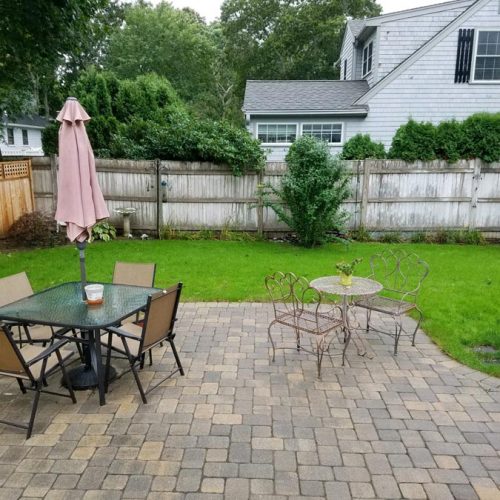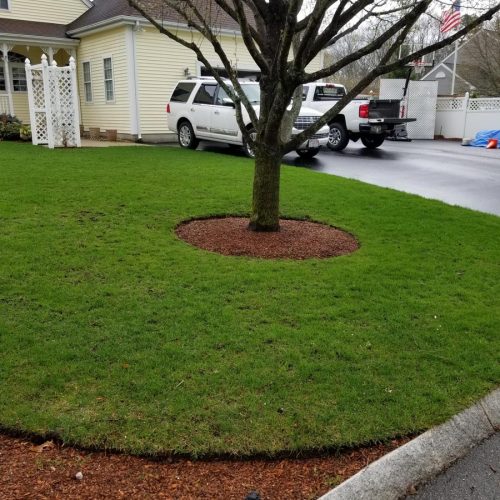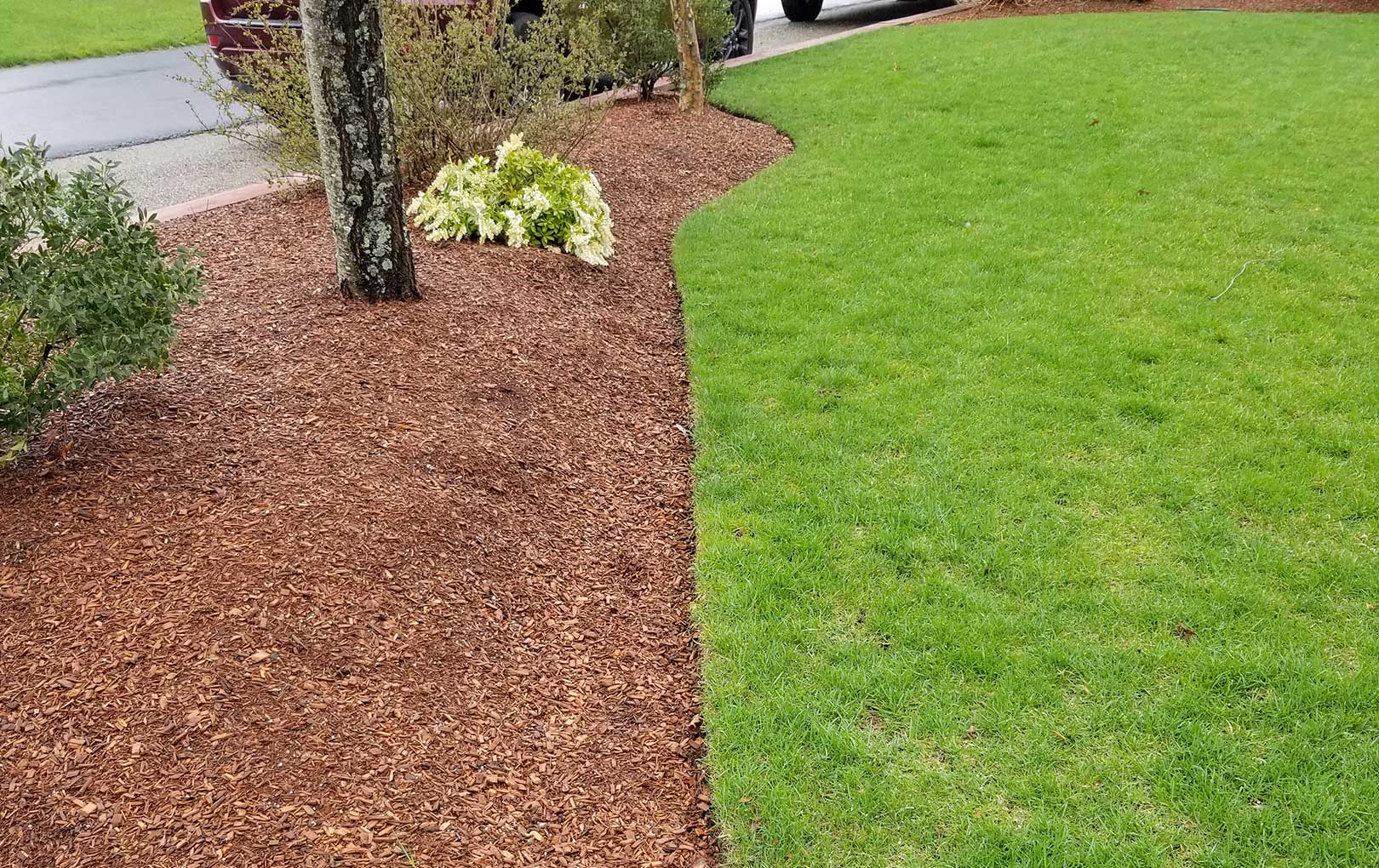Click here to see the our landscaping maintenance gallery.
SPRING CLEAN-UP
Spring Clean-Ups consist of the removal of all leaves and debris that have accumulated on the property over the winter, including cutting and removing any remaining perennials not completed during the fall clean-up. Spring clean-ups begin as soon as weather permits, typically about April 1.
BARK MULCH
Mulching helps to reduce temperature fluctuations in the soil, conserve moisture in the soil, suppress weed growth, minimize soil erosion, and improve the aesthetics of shrub and perennial beds. Most commonly used bark mulches: Pine Bark blend, Hemlock Bark blend, and aged Dark Bark. Bark mulch is most commonly installed in the spring or following new plantings, however, it may be installed throughout the year.
LAWN MAINTENANCE
The cutting season generally begins the first of May and continues through the end of October. Lawn maintenance includes cutting all lawn areas and trimming all grass along walks, walls, foundations, etc. followed by the removal of all debris after the service is completed. Cutting heights will be adjusted according to weather conditions to encourage a healthy, vigorous lawn. Because lawns grow faster when water is more abundant (spring and fall) a bi-weekly cutting schedule is not offered during these periods. The maintenance crew may determine that your lawn does not require a cut periodically. In this instance, the client will be notified and there will be no charge for the visit as no services have been performed on your property.
FERTILIZER PROGRAM
To keep your lawn thick, green, and healthy, four applications of fertilizer are recommended. We recommend that ornamental trees and shrubs also receive one application of fertilizer to encourage healthy growth and an abundance of flowers. A balanced fertilizer program is imperative to ensure that your landscape looks its best.
LIME
PH plays a major role in the availability of nutrients naturally found in the soil. A low pH causes the majority of the nutrients to be chemically bound, or locked, in the soil, and are not available for the plant to use, resulting in plants that do not grow or flower as proficiently as they should. Lime will help raise the pH in the soil.
WEED AND PEST CONTROL
Weed and pest control can be added to your fertilizer program to manage weeds, insects, and diseases. Fairview Landscaping, Inc. uses Integrated Pest Management (IPM), which allows for an appropriate product and delivery method that minimizes the amount of pesticides used while delivering the desired results.
PRUNING (MAINTENANCE)
Pruning is completed most often during July and August but can be completed at any time of the year. Annual pruning of shrubs not only controls the size of the plant, but also helps define the shape and density of the plant, while encouraging new growth and flowering.
PRUNING (RENOVATION)
Renovation pruning is required when a plant has grown too large for its location. The proper time to perform this pruning will depend upon the plant variety.
FALL CLEAN-UP
Fall Clean-Ups are performed mid-October through November or early December. The clean-up includes removal of all leaves and debris from all lawn and shrub areas. Removal of perennial tops may take place at this time, or in the spring.
LAWN AERATION
Over time, soil in the lawn area becomes compacted. Aerating the lawn opens the soil to allow air, water, and nutrients to more easily reach the root zone of the turf. This service is best performed in the fall when the lawn is actively growing, but not likely to become infested with weeds.
TOP DRESSING
Top dressing is the process of adding a thin layer of material, typically compost, over the top of an existing lawn. When top dressing is done after a lawn has been aerated, the material is able to filter into the holes left by the aerator, leading to improved soil quality.
SLICE SEEDING
Slice seeding is designed to increase the density of an existing lawn. The key to good seed germination is good seed soil contact and proper moisture levels. Creating grooves in the soil with a slice seeder results in better seed soil contact than seeding by hand. The results from slice seeding have a greater impact when combined with aerating.
LAWN DE-THATCHING
Over time, a layer of dead material forms on top of the soil. This layer not only creates the perfect home for insects but is also a potential breeding ground for diseases. Periodically, this layer should be removed to minimize these threats, and to allow air, water, and nutrients to more easily reach the root zone of the turf. This service is best performed in the fall when the lawn is actively growing, but with less threat of weed infestation.

Contact us today for your free property evaluation and service quote
GALLERY
Aerate, Top Dress, Slice Seeding
Click to see the projects from start to finishMulching
Click to see the project from start to finish









